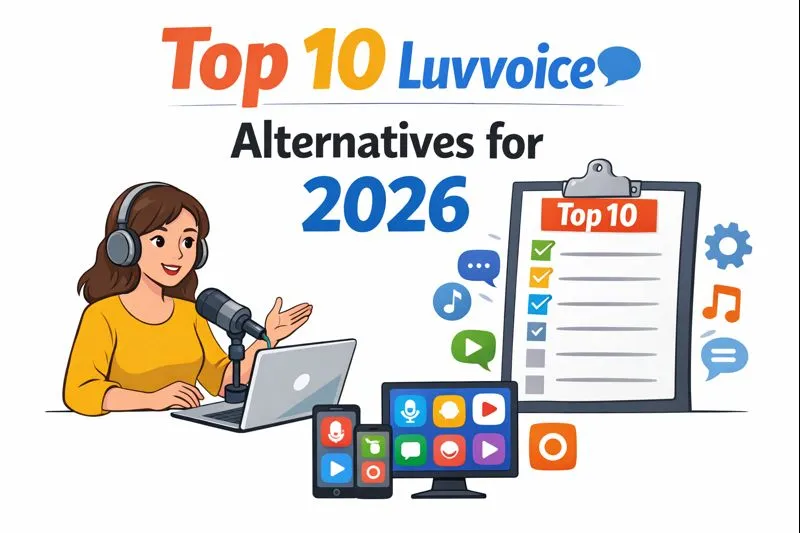Instant Voice Cloning: Free Tools Available
TL;DR
Introduction to Instant Voice Cloning
Okay, so voice cloning, huh? It kinda sounds like something straight out of a sci-fi movie, right? But it's real, and it's getting easier and cheaper to do.
Basically, voice cloning is where you use ai to create a digital copy of someone's voice. And I don't just mean like, a recording – I mean a freakin' model that can then say anything you type. wild.
- For video producers, this is kinda huge. Imagine you need a voiceover, but the original actor ain't available, or they cost too much. Boom! Clone their voice and save a bunch of time and money. Vocloner offers free instant ai voice cloning, which can save video producers time and resources.
- It's not just about saving cash, though. What if you need to update a training video but don't want to re-record everything? Voice cloning lets you tweak the script and have the same voice say the new lines, seamlessly.
- But, you know, with great power comes great responsibility and all that jazz. We gotta think about the ethical side of things. Like, are we gonna start seeing fake endorsements or deepfake audio being used to scam people? It's important to use this stuff responsibly and, uh, not be a jerk about it. Being vigilant against fake endorsements or deepfake audio means looking for inconsistencies in audio or video, and being skeptical of unsolicited or too-good-to-be-true offers. Resources like the Future of Privacy Forum offer guidance on identifying AI-generated content.
This tech is moving fast, and it's gonna change how we create content. Let's dive into how this works in practice.
How Voice Cloning Works in Practice
So, how does this magic actually happen? It's not that complicated, really. At its core, voice cloning involves feeding an ai model a bunch of audio data from the voice you want to clone. The ai then analyzes this data to learn the unique characteristics of that voice – things like pitch, tone, cadence, and even subtle emotional nuances.
Think of it like teaching a really smart parrot to mimic you. You talk, the parrot listens, and eventually, it starts to sound like you. With voice cloning, the ai is the parrot, and the audio samples are your voice. The more high-quality audio you give it, the better it gets at replicating the voice.
Once the model is trained, you can then feed it text, and it will generate audio in the cloned voice saying those words. It's pretty wild how accurate it can get!
Top Free Instant Voice Cloning Tools
NoteGPT: AI Voice Cloning
Ever wished you could just, like, clone your voice? Or maybe even someone else's voice? Well, NoteGPT is throwing it's hat into the ring. and it's actually pretty cool. It lets you replicate voices and turn 'em into customized audio – and the best part? No complicated setup, thank goodness. You can find it at NoteGPT.
Here's the lowdown:
- First, you gotta upload a clear audio sample. Think mp3, m4a, wav – you know, normal stuff. Then, the ai does its thing, and boom, voice cloned.
- Next, you get to tweak the cloned voice. Mess with the pitch, speed, and even the emotional style. Wanna sound angrier? More cheerful? Go for it.
- Finally, download or share your ai voice output. You can download the file, scan a qr code to listen on your phone, or just share a link. Easy peasy.
Apparently, it's a game-changer if you are a podcaster, video editor, social media manager, online educator, or indie creator. ( - Kveeky)
Onward! Let's talk about Narration Box and what it's got to offer.
Open Source Options for Voice Cloning
Okay, so you're thinking about going open source for voice cloning, huh? It's like, do you wanna build your own lightsaber instead of buying one at the store? There's definitely some cool stuff to consider.
- First up, is OpenVoice, which is kinda a big deal. It's got this "decoupled" thing going on, which basically means it splits up the work to make things run smoother. According to the ai.gopubby blog, it separates voice style/language from the actual, you know, voice itself. This means you can take the style of one voice (like its accent or emotional delivery) and apply it to a completely different base voice. It's like being able to say "speak like this person, but with my voice." This offers a lot of flexibility for creative control.
- Training it, though, is another story. You gotta kinda teach it how to listen and copy, but also, how to not copy certain things. This involves providing a dataset of audio samples and corresponding text, allowing the model to learn the mapping between speech and text, while also learning to isolate and replicate specific vocal characteristics. It's like teaching a kid not to pick his nose in public.
- And you can try it out! There's a demo floating around that lets you mess with it without needing to code anything. You can access the OpenVoice demo here (Note: This is a placeholder link; please replace with the actual demo link if available).
The diagram above illustrates a simplified voice cloning process. An audio sample is used to train a Base Speaker TTS Model. This model then works with a Tone Color Converter, which allows for the manipulation of vocal characteristics like style and emotion, ultimately producing the Cloned Voice Output.
So, what's the deal with open source in the first place, though? Open source means the code is publicly available, allowing anyone to use, modify, and distribute it. This fosters collaboration, innovation, and transparency. For voice cloning, it means researchers and developers can build upon existing models, leading to faster advancements and more accessible tools for everyone.
How to Choose the Right Tool for Your Needs
Choosing the right voice cloning tool is kinda like picking a new guitar pedal, you know? It's gotta fit your style and your budget.
- First, see how easy it is to use. Ain't nobody got time for complicated software.
- Then, listen to the voice quality. Does it sound like a real person, or a robot on helium?
- Also, what can you do with the voice? Can you tweak the emotion or add a specific accent?
- Finally, what's the catch with the free version? Limits on characters, maybe?
Now that we've explored some options, let's consider how to test these things out.
Testing Voice Cloning Tools
Okay, so you've picked a tool, or you're about to. How do you actually know if it's any good? Testing is key.
First off, use a clear, high-quality audio sample. The better the input, the better the output. Try to get a few different samples if you can – maybe one that's more conversational, and one that's a bit more formal.
Then, generate some audio with different types of text. Try short sentences, long paragraphs, and even some with tricky pronunciations. Listen carefully to how well the cloned voice handles the pacing, the emphasis, and the overall naturalness. Does it sound like a real person talking, or is it choppy and robotic?
Don't be afraid to experiment with the settings too. If the tool allows you to adjust pitch, speed, or emotion, play around with those to see how they affect the final output. The goal is to find a tool that gives you the most realistic and controllable results for your specific needs.
Use Cases for Video Producers
Voice cloning for video pros? Yeah, it's kinda a big deal. Think about all the ways you can use it, it opens up a lot of doors, y'know?
- Need a voiceover for an explainer video but the voice actor is booked solid? Clone their voice and get it done.
- Got an animated character that needs a specific sound? ai voice cloning can create it.
- Localizing content is easier, too. keep the same tone, just, uh, different language! Voice cloning helps with this by allowing you to maintain the original voice actor's unique intonation, emotion, and delivery style even when translating the script into a new language. This makes the dubbed content feel more authentic and engaging.
What's next? Let's talk about saving some time and, more importantly, money.
Ethical Considerations and Best Practices
Ethical stuff, right? It's not always the first thing we think about, but with ai voice cloning getting so easy, its gotta be a priority. Seriously.
- First off, transparency is key. If you're using a cloned voice in a video, make sure you say so. Nobody likes being tricked, and it's just good form.
- Then there's consent. If you're cloning someone's voice, get their permission! It's their voice, their identity and you can't just go around stealing it, right?
- And, uh, don't be a jerk. no using cloned voices to spread misinformation or create deepfakes that could damage someone's reputation or, you know, cause real-world harm.
- Finally, respect copyright and intellectual property. Don't go cloning famous voices for commercial purposes without getting the rights first, or get sued!
Look, voice cloning is a powerful tool. But, like any tool, it can be used for good or evil. Let's all try to use it for good, okay?






